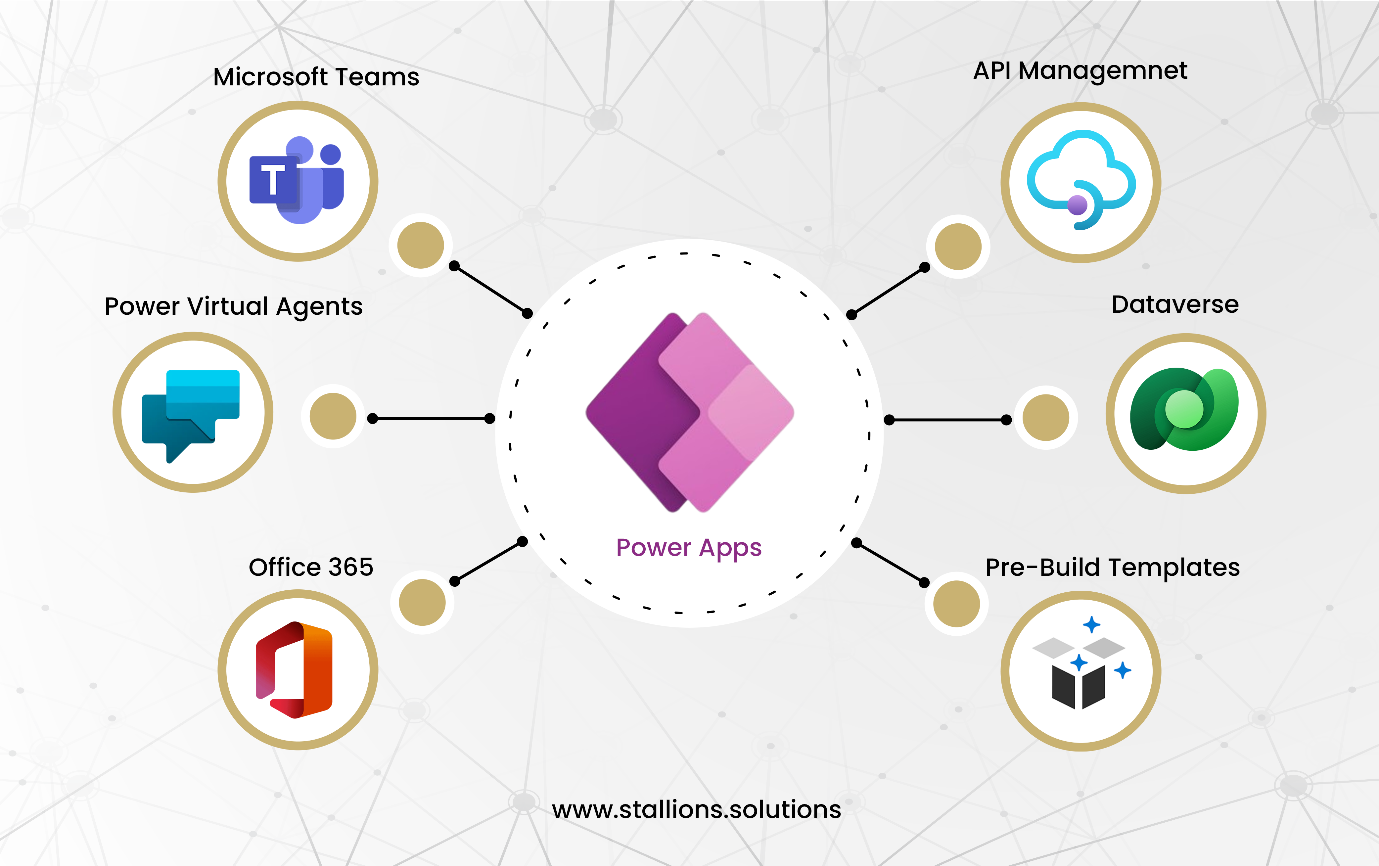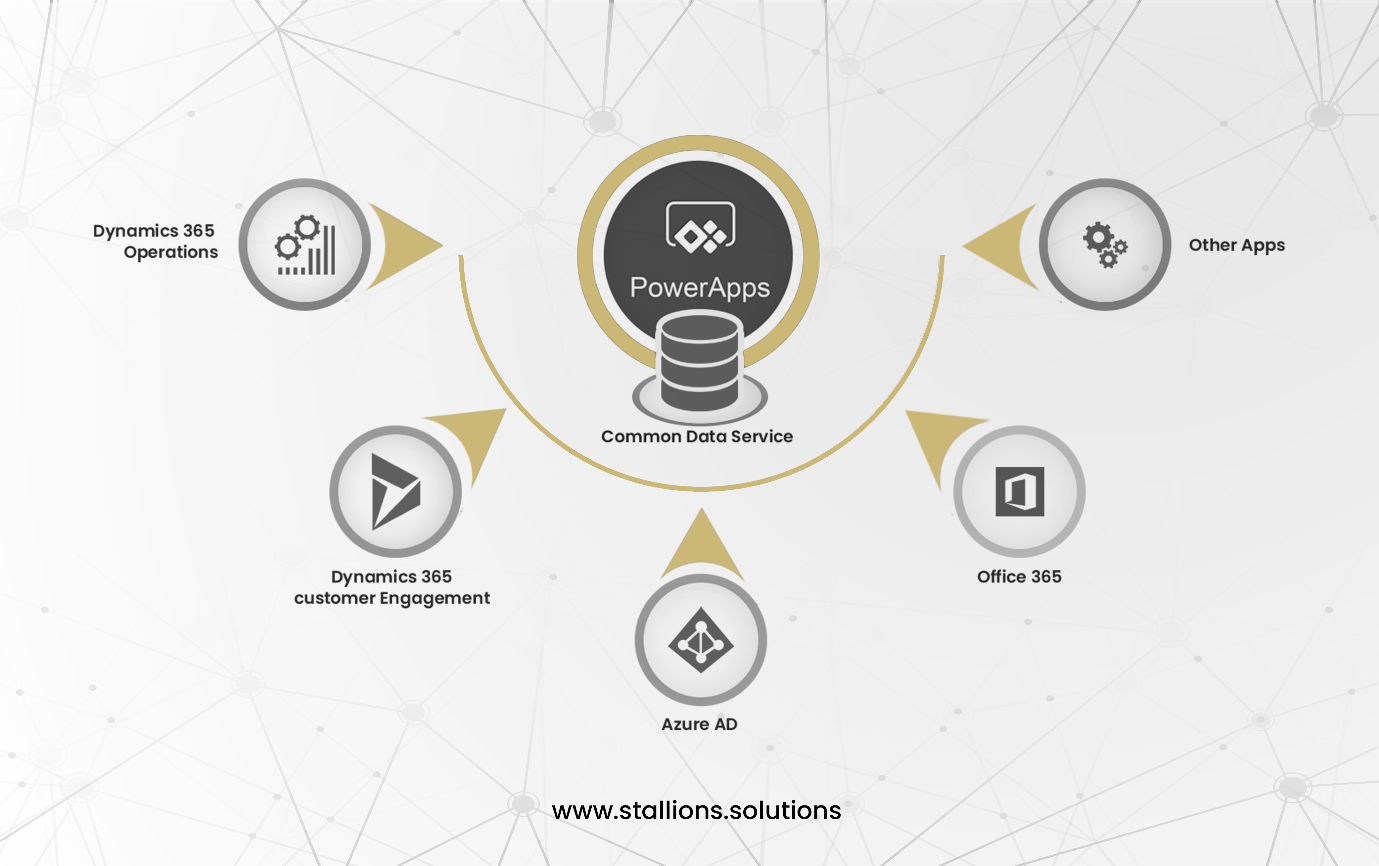Organizations are automating business operations and using cloud-based software solutions in greater numbers because of the rapid evolution of technology. To achieve this goal, organizations must depend significantly on their IT teams to construct customized software and develop apps that meet the unique demands of diverse teams inside different departments. Any organization’s IT department will likely be able to handle the massive demand this creates. As a result, companies can only partially reap the rewards of digital process transformation.
Microsoft Power Platform offers Power Apps, an easy-to-use platform that allows teams to create new business apps without coding expertise, helping business teams become less dependent on the IT department. To guarantee a simple no-code/low-code development process, the technology allows seamless integration of apps with current business data banks, including email, Microsoft Excel files, POS (Point of Sales) systems, CMS records, etc.
What are Microsoft Power Apps?

With the help of Microsoft Power Apps, low-code developers may create custom applications for their businesses. The platform offers a variety of connectors, apps, services, and a data platform. Professional developers may create apps much more quickly at low-code development platforms since they don’t require writing code line by line. It’s a visual software development method that eliminates traditional barriers between IT and business.
Microsoft Power Apps is an easy-to-use, highly customizable, low-code platform. For task- and role-specific scenarios like integrated marketing views, prospect to cash, field sales enablement, inspections, and more, it may help in resolving business issues. In theory, even non-developers with little to no coding knowledge can produce expert-looking, easy custom solutions.
Understanding Microsoft Power Apps Using Case Studies
Field Sales Lead Generation
Allow sales teams to capture leads more efficiently by providing them with personalized mobile applications. Field sales professionals can save time and obtain fast data by using mobile apps to scan business cards while on the go.
Self-Registration For Events
Event registration apps that allow participants to sign up and check in using their mobile devices can be created with Power Apps. In the business database, the app will automatically gather signee data that may be utilized to automate additional communication.
Expense Reimbursement
By creating an app that allows staff members to enter expense details and attach related photos, businesses can easily manage and refund travel and other expenses. First, Microsoft Power Apps will enable enterprises to develop solutions to address process inefficiencies quickly.
Microsoft Power Apps Benefits For Businesses
You may benefit your company in the following ways with Power Apps:
Solves Unique Business Challenges

You can create a custom app using PowerApps to fulfill all these requirements if your company must address a particular difficulty, must meet a specific requirement, or has a concept for an innovative solution that could provide you with a competitive edge. Power Apps can simplify automating communications, tracking employee spending, running data analytics, and integrating AI functionality into your processes. Additionally, because it’s customizable, you may make your app fit your organization by considering any inefficiencies or special procedures.
Accelerates Business Transformation

One of the best things about Power Apps is how quickly your company can create a professional app. Companies no longer need to wait for IT. Compared to traditional development approaches, Power Apps development and deployment are considerably faster, mainly when dealing with an extensive backlog of projects within your IT staff. You can quickly create an interface, link your data, and accomplish more with the low-code platform’s user-friendly drag-and-drop interface and pre-built templates in weeks if not days.
Cost-Effectiveness
Regarding app development, businesses typically believe they have two options: outsourcing or in-house development. These are two potentially costly and time-consuming solutions. A third alternative is now available, though, and it involves creating applications using Microsoft Power Apps. With this platform, businesses can quickly deploy their apps while managing their app development expenses. Companies that have invested in Power Apps have successfully shifted their operational money to marketing and other expansion prospects.
Integration with Microsoft 365 & Other Microsoft Applications

One benefit of Power Apps is that it can be easily integrated with Microsoft 365 (Office 365) if you’re using it, giving you access to data from SharePoint, Excel, and other sources. Additionally, it works flawlessly with the different parts of the Power Platform and other Microsoft programs like Dynamics 365. If any of these programs are used by your company, adopting Power Apps can significantly increase productivity.
Multiple Data Sources
Another benefit of Power Apps is the ability to integrate data from several sources to develop an app. A wide variety of connections are available for Power Apps, covering hundreds of well-known third-party services.
Other advantages that Microsoft Power Apps may provide for your company include:
- You can automate manual operations, eliminating repetitive and irritating tasks efficiently. When apps digitize existing manual or paper-based activities, they can increase efficiency and productivity.
- When a business transformation is enabled, you should expect better business outcomes—such as happier customers, more productive IT teams, shorter time-to-market, higher revenue, etc.
Conclusion
Microsoft Power Apps allows company people so they don’t have to rely on IT to develop applications for them. Businesses can use this platform to quickly improve operations and save money because low-code/no-code applications can be produced without IT experience.



